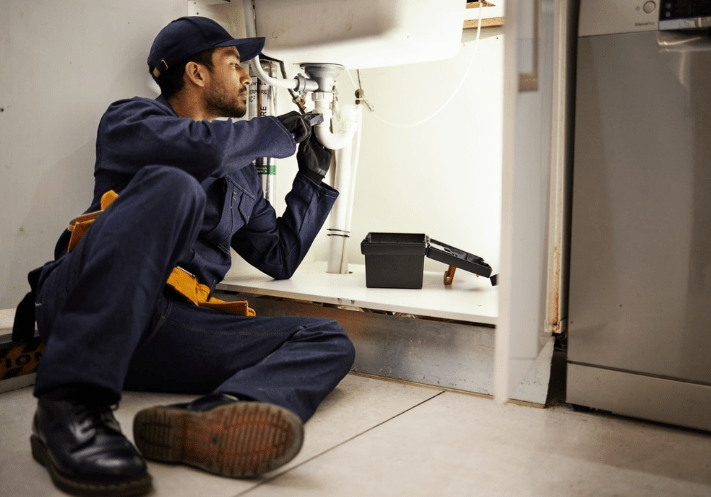In the fast-moving environments of restaurants, offices, and retail shops, downtime is money lost. Most business owners know this. What many don’t realize is how often plumbing problems are the cause of that downtime—and how easily those problems could be avoided with routine maintenance.
From small leaks that quietly drain water and inflate bills, to full-blown pipe bursts that halt operations entirely, plumbing issues are more than a minor inconvenience. They’re costly, disruptive, and often entirely preventable.
The hidden costs of ignored plumbing
It’s tempting to treat plumbing like background infrastructure—something you don’t think about until it breaks. But ignoring it can lead to expensive consequences. A leaking faucet or running toilet might seem harmless, but they can waste thousands of liters of water each month. In a commercial setting, that translates to a noticeable bump in utility bills.
Worse yet, water damage from hidden leaks can damage drywall, warp flooring, or foster mold growth. The repair costs for those types of issues often run well into the thousands. Emergency calls also come at a premium, and you’ll be lucky to find available commecial plumbers during peak business hours without paying rush fees.
Then there’s the impact on customer perception. A restroom with unpleasant odors or a clogged drain might push customers out the door—and they won’t be coming back.
Restaurants: high demand, higher risk
In restaurants, the plumbing system is always under pressure. Grease traps need to be regularly cleaned, water lines must maintain consistent pressure, and drainage systems must handle heavy use throughout the day. A clogged pipe in the kitchen can shut down food prep. A backed-up drain in the restroom can force a full closure.
Routine maintenance includes checking for grease buildup in pipes, inspecting water heaters for efficiency, and testing for slow drains before they become emergencies. These small interventions can prevent major disruptions during dinner rush or lunch hour.
Offices: protecting infrastructure and productivity
While office buildings might not deal with grease traps, they still face challenges like aging pipes, inefficient water heaters, and worn-out fixtures. Over time, even small drips or fluctuating pressure can damage ceiling tiles or flooring in multi-story setups.
Leaking pipes in office walls can also harm electrical systems or IT infrastructure. The cost of replacing damaged servers or cabling—not to mention the disruption to workflows—can far outweigh the cost of regular inspections. And let’s not forget the frustration that comes from broken restrooms in a high-traffic office space.
Retail spaces: image and safety on the line
Retail environments depend heavily on clean, functional public spaces. Shoppers notice things like wet floors, bad smells, or malfunctioning sinks. Plumbing issues don’t just affect operations—they reflect poorly on the business itself.
Slippery floors caused by undetected leaks are a liability nightmare. Regular plumbing checks help prevent accidents, which protects not just your reputation, but your legal exposure too.
What routine plumbing maintenance includes
A commercial plumbing maintenance plan typically covers:
- Checking for visible leaks and hidden signs of damage
- Inspecting toilets, urinals, and sinks for function and wear
- Water pressure testing
- Flushing and cleaning drains and grease traps
- Inspecting and servicing water heaters
- Camera inspections of underground or hidden piping
Businesses that partner with professional services gain more than just repairs—they get ongoing support, system monitoring, and timely recommendations based on their specific usage needs. POM Plumbing Group is known for their structured maintenance programs that minimize risk and keep operations running smoothly without unplanned interruptions.
Scheduled service beats emergency repair every time
It’s easy to ignore plumbing when everything appears to be working fine. But in commercial settings, even a short interruption can mean lost revenue, negative customer experiences, or regulatory headaches. Scheduling regular maintenance means problems are caught before they get worse—and fixed before they get expensive.
Routine service also allows business owners to budget their maintenance costs, rather than absorbing surprise expenses from emergency repairs or water damage restorations. Over the course of a year, this proactive approach can save thousands.
Consistency leads to savings
There’s no glamorous headline in a leak-free faucet or a properly draining sink—but the businesses that stay ahead of plumbing problems are the ones that maintain their edge. Whether you’re running a busy café, managing a corporate building, or overseeing a retail store, consistent plumbing maintenance is one of the smartest financial decisions you can make.
Because in business, the small stuff adds up—and it often starts with the pipes.

